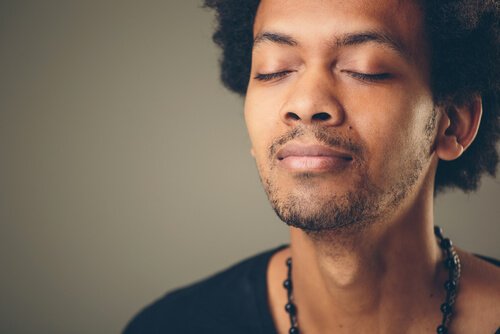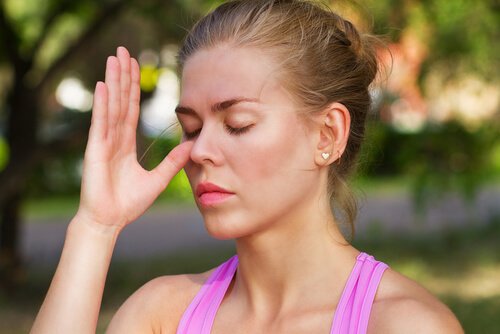3 Exercises to Relieve Anxiety in a Few Minutes

Have you ever felt a sudden and overwhelming feeling of fear or anxiety? Or the feeling that something terrible is about to happen? Or have you ever felt overwhelmed by stress or on the verge of a nervous breakdown? It may seem like a complex task, but it’s possible to ease anxiety quickly and easily by performing breathing exercises.
You may think that this is easier said than done. And you’re sort of right. First of all, because remembering to breathe in the middle of an anxiety, panic, or stage fright attack isn’t usual unless you’ve practiced these exercises before.
Therefore, if you’re prone to having anxiety attacks, we recommend you try these exercises and do them often, as a training for situations where the anxiety isn’t so serious. This will help you apply them when you need the effect that they produce.
Breathing exercises help relieve anxiety
I suggest you take a slow breath and fill your lungs. Right now you have all your attention focused on a single gesture. Your mind isn’t occupied with anything else, neither with external stimuli nor the thoughts that run through your mind. You’re just tuned in with your breathing, slow and quiet.
But it’s not just a matter of peace of mind. Your body feels physically different, even if it’s only for a moment. This is because, while you’re focused on those slow, deep breaths, you’re sending a message to your brain: it’s time to calm down. Your brain, at the same time, sends messages throughout your body that result in the feeling of calmness.

The same thing happens in an anxiety situation. In that situation, you can feel physically and mentally calm with only a few deep breaths.
Relieve your anxiety with breathing exercises
What often happens during an anxiety attack is that, instead of slowing our breathing down, we’re trapped in the sensation that’s reflected in those quick inhalations, as if we’re not getting enough oxygen. This makes us panic even more and sends all kinds of confusing signals to the brain, which, in response, sends its own signals throughout the body, negatively affecting the levels of oxygen and carbon dioxide.
When we finally get our breathing under control, the brain receives the signal that it’s time to correct the levels of oxygen and carbon dioxide, thus relieving those symptoms and making us feel calmer. That’s why doing breathing exercises as soon as we start to feel anxiety symptoms, even before a situation that provokes this feeling, is so valuable.
Easy abdominal breathing
This breathing technique is very simple and, at the same time, effective. To do this abdominal breathing technique, follow the next steps:
- Sit or lie down comfortably and look at the ceiling. Close your eyes, relax your shoulders and try to get rid of the tension. Additionally, you can place one hand on your belly and another on your chest.
- Inhale deeply and slowly through your nose. You should notice that your belly rises and your chest expands (without it rising too much).
- Exhale slowly through your mouth, keeping your jaw relaxed. Note how your belly descends and your chest goes back to normal.
Repeat several times. To improve its effects, inhale in four beats and exhale in four beats, trying to make those four beats last longer. You can even get better effects if, after a few repetitions, you hold your breath before exhaling four beats. It’s even better if you also hold another four beats in apnea, without catching your breath.
Alternate nostril breathing
This exercise can be a bit complicated, but it’s very effective. It gets easier if you do it regularly. To do this alternate nostril breathing technique, follow the next steps:
- Place your right thumb over your right nostril, covering it.
- Inhale through your left nostril.
- Place your index finger over your left nostril and exhale through your right nostril.
- Without moving your fingers, inhale through your right nostril.
- Cover your right nostril with your thumb and exhale through your left nostril.
This basically consists of inhaling through one nostril and exhaling through the other, alternating sides. This exercise is very purifying for both your body and mind and allows you to focus.

Ujjayi breath
This breathing technique is a very useful yoga technique to relieve anxiety. Ujjayi (pronounced ooh-JAH-yee) is commonly translated as “victorious breath” and has been used for thousands of years to improve the practice of hatha yoga. It’s also known as “oceanic respiration”.
To perform the ujjayi breathing technique, follow the next steps:
- Preparation:
- Sit comfortably and inhale deeply through your nose.
- Exhale slowly, through your mouth, as if you were going to fog a mirror.
- Repeat several times to learn how to position the throat.
Ujjayi breathing
- Inhale deeply through your nose.
- Exhale slowly, reproducing the throat preparation gesture, but with your lips closed. You should feel a sound very similar to the one heard in a conch shell.
- Repeat several times.
Whenever you feel anxiety is trying to take hold of you, just breathe. The more you practice these recommended breathing exercises or others, the easier it’ll be for you to relieve anxiety.
This text is provided for informational purposes only and does not replace consultation with a professional. If in doubt, consult your specialist.








